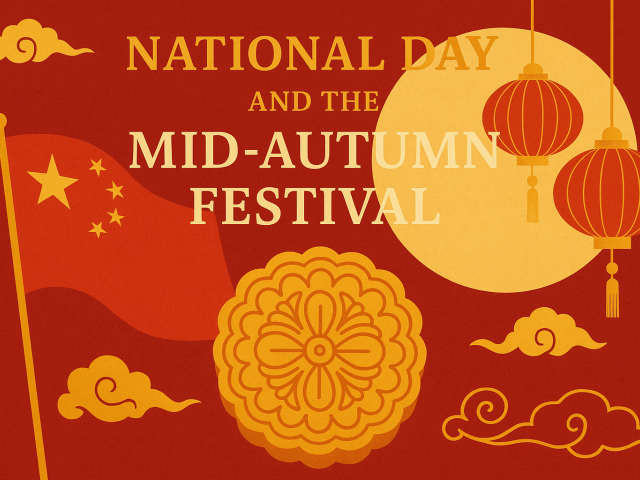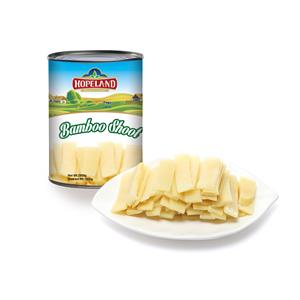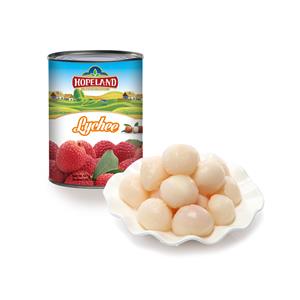Golden Nation Meets the Silver Moon in 2025
In 2025, China will witness a rare alignment of two of its most meaningful holidays—National Day and the Mid-Autumn Festival. One celebrates the founding of the People’s Republic of China, a day of pride and unity; the other is a festival steeped in centuries-old traditions of family reunion, poetry, and moonlight. Together, they form an extraordinary eight-day holiday that will blend patriotism with personal connection, collective memory with intimate family gatherings, and the nation’s “golden” strength with the moon’s “silver” beauty.
According to the General Office of the State Council’s official holiday notice, the 2025 schedule is as follows:
Holiday period: October 1 (Wednesday) – October 8 (Wednesday), 2025 — a total of 8 days
Make-up workdays: September 28 (Sunday) & October 11 (Saturday)
This special arrangement means that while people across China wave flags, attend parades, and travel to scenic spots in celebration of National Day, they will also pause on October 6 to admire the full moon, share mooncakes, and gather around the family table. The overlap of these two festivals is not only a logistical delight for holidaymakers but also a profound cultural event that brings together themes of nation and home, prosperity and reunion, modernity and tradition.

The Golden Nation: The Spirit of National Day
A Historical Milestone
National Day on October 1 marks the anniversary of the founding of the People’s Republic of China in 1949. On that day, Chairman Mao Zedong proclaimed the new republic in Tiananmen Square, ushering in a new era of sovereignty and unity after decades of turmoil. Since then, October 1 has become a day of commemoration, pride, and reflection on China’s progress and global role.
Traditions of Celebration
The Flag-Raising Ceremony: In Beijing, tens of thousands gather before dawn in Tiananmen Square to witness the raising of the national flag. This solemn event is broadcast live across the country, reminding people of the unity and resilience of the nation.
Parades and Fireworks: On milestone anniversaries (such as the 70th in 2019), massive military parades and cultural performances take place. Even in non-milestone years like 2025, there will still be spectacular firework shows, concerts, and public celebrations.
Golden Week Tourism: The week-long holiday, known as “Golden Week,” is one of China’s busiest travel periods. Millions take to trains, planes, and highways to visit family or explore the country’s scenic sites. Tourist attractions, from the Great Wall to West Lake, become vibrant hubs of activity.
Decorations Nationwide: Streets, squares, and shopping centers across China will be decorated with national flags, red lanterns, and festive lights, creating a celebratory atmosphere that unites city and countryside alike.
National Day reflects not only political history but also cultural pride and collective joy. It represents the “golden” radiance of the nation, strong and enduring.
The Silver Moon: The Essence of the Mid-Autumn Festival
Origins and Legends
Falling on the 15th day of the eighth lunar month, the Mid-Autumn Festival is one of China’s oldest and most beloved traditional holidays. In 2025, it falls on October 6, right in the middle of the National Day holiday.
The festival’s origins are linked to moon worship and harvest celebrations, with legends such as Chang’e flying to the moon, Hou Yi shooting down the suns, and the Jade Rabbit pounding medicine adding mythological richness to the occasion.
Traditions and Customs
Moon Gazing: Families gather outdoors to admire the full moon, which appears brightest and roundest on this night. The moon symbolizes reunion and completeness.
Mooncakes: These round pastries, filled with lotus seed paste, red bean paste, or salted egg yolk, are the festival’s iconic food. They are exchanged as gifts among family, friends, and business partners, symbolizing harmony and goodwill.
Lanterns and Festivities: Colorful lanterns—sometimes shaped like animals, flowers, or zodiac signs—are displayed in streets and parks. Children often carry small lanterns, adding joy to the night.
Poetry and Reflection: For centuries, poets such as Su Shi have written verses about longing for loved ones under the same moon. Reciting poetry or reflecting on these cultural traditions is still common during the festival.
The Mid-Autumn Festival’s essence lies in reunion, reminding people to cherish family bonds, express gratitude, and appreciate life’s simple yet profound joys. It embodies the “silver” glow of the moon, soft yet eternal.
2025: A Rare Double Celebration
The overlap of National Day and the Mid-Autumn Festival does not happen every year. When it does, as in 2025, it creates a holiday that is both longer and deeper in meaning.
Eight Full Days of Festivity: The official holiday runs from October 1 to October 8, giving people extended time to rest, travel, and celebrate.
National and Personal Unity: October 1 celebrates the collective spirit of the nation, while October 6 highlights personal and family bonds. Together, they represent a harmony between country and home.
Cultural and Economic Impact: The combined holidays will generate a tourism boom, increased retail sales (especially mooncakes and gifts), and lively cultural events that merge patriotic and traditional themes.
Imagine families traveling across provinces to visit loved ones, carrying gifts wrapped in red and gold. In public squares, fireworks will light up the sky, while in courtyards, people will quietly sip tea and gaze at the glowing moon. The golden nation and the silver moon will shine side by side, creating a memory for generations.
Holiday Travel and Celebration Tips
With such a long and meaningful holiday, planning is essential.
For Travelers
Book Early: Trains, flights, and hotels will be in extremely high demand. Reservations should be made weeks, if not months, in advance.
Travel Smart: Avoid peak travel days (October 1 and October 8), which see the heaviest crowds. Consider traveling during mid-week.
Choose Alternative Destinations: Famous landmarks will be crowded. Exploring smaller towns, cultural heritage sites, or natural reserves may offer a more relaxing experience.
For Families
Balance Travel and Reunion: Families may choose to reunite at home for Mid-Autumn, even if they travel for National Day. Sharing mooncakes, lighting lanterns, and storytelling make for lasting memories.
Engage Children in Traditions: Activities like lantern-making, reading legends of Chang’e, or baking homemade mooncakes help younger generations connect with heritage.
For Businesses
Leverage the Double Festival: Retailers can create holiday promotions that combine patriotic themes with festive foods and gifts.
Hospitality Industry Opportunities: Hotels and restaurants can design “double festival” packages, including moon-viewing parties, themed dinners, and family activities.
Cultural Symbolism: Nation and Family
The 2025 double celebration reflects a profound cultural truth in Chinese tradition: the inseparability of family and nation.
The Nation as a Family: In Chinese culture, the metaphor of the country as a “big family” is deeply rooted. National Day embodies this idea, uniting citizens under a shared identity.
The Family as the Foundation: The Mid-Autumn Festival reminds people that strong families are the foundation of a strong nation. Reunion and harmony at home reflect stability in society.
The juxtaposition of these festivals highlights a holistic worldview: that personal happiness and collective prosperity are interdependent. The “golden nation” and the “silver moon” together symbolize balance, harmony, and continuity.
A Modern Perspective
In today’s rapidly changing world, these holidays carry evolving significance:
National Day now highlights not only history but also China’s role as a global economic and cultural leader.
The Mid-Autumn Festival has become a cultural export, celebrated among Chinese communities worldwide and increasingly recognized by international friends.
Digital Celebrations are growing—families separated by distance use video calls to share moon-gazing moments, while e-commerce platforms send mooncakes across borders.
In 2025, technology and tradition will intertwine: drones may illuminate the night sky in patriotic displays, while centuries-old poems are recited under the same moonlight.
Looking Ahead
The 2025 double celebration will leave lasting impressions:
For Families: A rare chance to unite for eight days, combining travel, celebration, and tradition.
For Businesses: A golden opportunity to boost tourism, retail, and cultural products.
For Society: A reminder of the importance of balancing modernization with cultural heritage.
As people wave flags by day and gaze at the moon by night, the holiday will become a living metaphor of China’s path forward: strong yet graceful, modern yet rooted in tradition, global yet deeply personal.
Conclusion: When Gold Meets Silver
The 2025 National Day and Mid-Autumn Festival holiday is more than just an extended vacation. It is a cultural phenomenon where the “golden nation” of collective pride meets the “silver moon” of personal reunion. It is an affirmation that the strength of a country lies not only in its history and achievements but also in the warmth of its families and the continuity of its traditions.
From October 1 to October 8, 2025, citizens across China and beyond will celebrate together. The red of the national flag will wave under the glow of the moon, symbolizing a future that is both prosperous and harmonious.
In this rare alignment of calendars, when the golden nation meets the silver moon, China’s people will find joy not just in rest, but in remembering who they are, where they come from, and where they are going.




